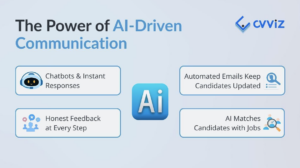A well-trained employee can do more than simply follow established procedures and guidelines. They can solve problems, act independently to benefit the customer and the business, fulfill their duties more than competently, and apply the company’s mission in their jobs. Not only that, effective training leads to employees that feel more valued, and faceless frustration.
The challenge is that employee training is complex. You’re dealing with a group of people with different training needs, and varying learning styles. How do you make training work for your staff? You can start with these seven techniques.
1. Set Tiered Goals
Your training efforts should meet the needs of your organization as a whole, the various departments within, and those of your employees. Doesn’t it make sense to establish training goals that address all of those?
Before you dive headlong into designing an employee training program, start by establishing tiered goals. Ask the following questions:
- What are the compliance training needs that apply to all employees?
- What are the compliance training needs that are specific to each department?
- How do we understand the unique training needs of each team and each individual?
- What training do individual employees need to help the company reach its goals?
As you explore these questions, you’ll be able to set training goals and design employee training programs at the organizational level, team level, and for each individual employee.
2. Let Employees Conduct Job Focused Training
Obviously, there will be some kind of training that you have to Outsource. Compliance training and new software training come to mind. However, when it comes to training that covers policies and procedures as well as best practices, the best teachers are often seasoned employees. They understand what works best in various situations, and can pass their experience and expertise on to others.

3. Make Training a Core Part of The Work Experience
Too many companies see training and development as a cost rather than an investment. As a result, training becomes an event that only occurs when the need arises. Instead, training to be seen as part of each employee’s developmental path, and engaging in it should be part of their work duties.
Managers and team leaders can help by creating a culture that prioritizes training and development and helps employees Define the training they need. More importantly, they can support them in getting that training. There are several things that companies can do to this end:
- Creating an internal knowledge base and making it accessible to all employees
- Supporting employees that pursue Education and Training on their own time
- Forming corporate relationships with local and online training providers
- giving employees time to engage in training and development on the job
- incorporating training goals into reviews
4. Consider Different Learning Styles
Any training effort is only as valuable as its results. The best employee training program keeps all learners engaged, and leaves them with skills they can apply on the job. To do this, the courses and training you provide must accommodate a variety of learning styles.
While you probably cannot create a separate learning initiative for each type, you can understand the VARK learning model. Then, incorporate elements that are helpful for each type in your training. For example, visual learners benefit from charts and graphs. Kinesthetic learners do their best while participating directly in activities.
To meet as many needs as possible, think about the senses. Give learners something to read, to watch, to listen to, to look at, and touch. This will significantly increase the chance that everyone will engage with and understand the material.
5. Obtain Buy-In From Leadership
When people in positions of leadership believe in the importance of training, and show that it’s a priority, the people underneath them are more likely to follow suit. However, this goes beyond vocalizing support. It’s up to leaders to make expectations clear, ensure that employees are held accountable, and for doing the work required to ensure that employees can access the training they need.
When people in positions of leadership believe in the importance of training, and show that it’s a priority, the people underneath them are more likely to follow suit. However, this goes beyond vocalizing support. It’s up to leaders to make expectations clear, ensure that employees are held accountable, and for doing the work required to ensure that employees can access the training they need.
Most leaders are concerned with two things when it comes to training. They want to be assured that the training provided is relevant. Many also want to see how the training will impact the bottom line.
6. Get Feedback
It’s common for trainers to provide students with some means to provide feedback. There may be a form to fill out or an online questionnaire. That’s great, but it isn’t enough.
First, do you really want to wait until the end of an in-depth training program to find that students are frustrated or confused? Of course not! Consider collecting small bits of feedback from trainees along the way. Now, look towards the future. Sometimes, it’s difficult to gauge the usefulness of a training program until it has been applied in the real world. It can be helpful to collect feedback at different stages after the training has been completed.
Finally, while direct feedback is great, it’s not the only information you should collect. Use assessments to determine mastery and competence. Measure the results of the training using metrics that you have established, and the goals you have set.
7. Tap Into Free Training Resources
Most businesses will need to invest financial resources into their employee training programs. Still, there may be opportunities to bolster this through free educational resources and information. Much of this could be from sources in your own industry. For example, there may be free online courses, webinars, and other training available. Look to your software providers, industry-related publications, as well as industry associations.
There may even be sources within your own community. For example, your local chamber of commerce may offer brown bag sessions on time management, computer skills, or other topics that could benefit your employees. Even your EAP might offer some soft skills training, and government agencies often have free training resources on a variety of topics such as HIPAA, safety, and environmental protection.
Final Thoughts
Well trained employees don’t just do their jobs better. They feel empowered, valued, and are more likely to be loyal to your organization. By applying these seven tips, you can help ensure that your employee training programs are as effective as possible.

About the Author
Daniela McVicker is a career coach and an editor at Top Writers Review. She’s also a business communication coach, helping future job applicants to write business emails to help them achieve success in their career paths.



